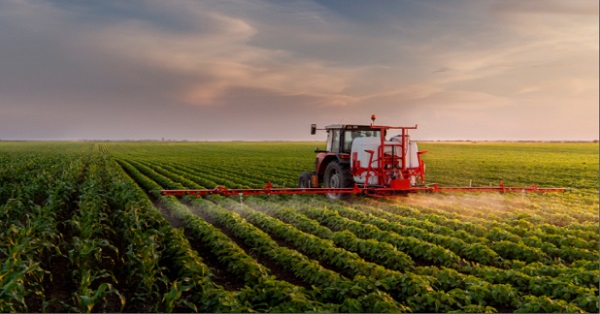Also Interesting
Will Quebec Be Next To Tap Into The Online Gambling Industry Boom?

Online gambling is becoming an increasingly popular pastime in Canada, following a global trend that has seen the industry become one of the most profitable in the world. In fact, the online global gambling industry is slated to be worth over US$153 billion by 2030.
However, until recently, in most parts of Canada, only foreign online casinos could cater to Canadian customers and tap into this rising demand for online slots and other casino games.
This only changed early in 2022 when Ontario made waves by becoming the first Canadian province to welcome domestic online gambling. This landmark move seems likely to generate a wealth of new jobs and local infrastructure, and could potentially bring in a significant amount of revenue.
With so much to gain from allowing Canadian online casinos to flourish, it seems likely that other provinces such as Quebec could soon follow in Ontario’s footsteps.
Business is booming
Globally, the online gambling industry is worth over $60 billion, with offshore operators making up a large section of the market.
This is because many countries do not currently allow domestic online casinos, including Canada – except Ontario, now, of course – so instead their residents sign up for reputable online casino sites such as Rizk.
The reasons for the blossoming online gambling industry are varied, but they include continual developments in technology that allow easy access to virtual casinos. These include the rise in mobile casinos, which people can play at any time and no matter where they are.
Online casinos are also particularly appealing to new gamblers because of the bonuses and promotions they offer, which cannot be matched by brick-and-mortar sites. Welcome bonuses are one of the ways casinos reward new customers for registering, and they can be very generous, whether they come in the form of free spins or a percentage of the player’s deposit.
Choosing a reputable casino – advice for Canadian players
While Canada may still only be beginning its journey into the realm of online casino provision, Canadian players can access offshore sites, as mentioned above.
However, while there are many trusted sites available, there will also be casinos of more dubious repute.
Here are some helpful tips for choosing the right casino to hopefully help Canadian players avoid the pitfalls of unscrupulous operators.
Check the licensing
Offshore casinos will usually be licensed by well-established authorities such as the Curacao eGaming Authority or the Malta Gaming Authority. These institutions have been operating for years and are known for their solid reputation. If you find a casino site with no clear licensing this should be viewed as an instant red flag.
Choose the best bonuses
Reputable casinos will offer fair welcome bonuses that do not come with too many strict wagering requirements preventing you from claiming your winnings. Read the T’s and C’s of any bonus carefully before committing to make sure they are fair.
Make sure there is a good customer service support system
The best casinos offer high standards of customer service. To test this, contact a casino site’s customer support service before signing up, to see how much help they provide.
By following these steps, Canadian gamblers should find it easier to locate reputable offshore sites until they have more domestic options to choose from.
Also Interesting
Understanding Slot RTP and Variance: Which Slot Game Is Right for You?

When it comes to playing slots, luck plays a huge role, but there’s more to winning than just spinning the wheels. Checking the variance and RTP of a slot game beforehand can help you find one that matches your style and strategy. Whether you’re a casual player or chasing a jackpot, understanding these factors can improve your experience. For Canadian players looking to try their luck, Tenexcasino.com is a top choice among crypto casino sites, offering a great platform to explore these games.
What is RTP?
RTP or Return to Player shows how much of the money you bet goes back to you over time. It also shows you the “house edge,” or how much of your money goes to the casino over the same period. If a slot has an RTP of 90%, 90 cents of every dollar you bet goes back to you. The remaining 10 cents is the “house edge” or the profit the casino will likely make.
RTP is measured over time and doesn’t tell you what will happen with each spin. But it can tell you which slot games to pick if you want to minimize risk.
What Is Slot Variance?
Variance also shows the risk of playing each slot game. But unlike RTP, it determines how often you can expect to win and the average size of each payout. Will you see small, frequent wins or rare but potentially huge payouts?
Depending on your preference and budget, you can opt for low, medium, or high-variance slots. Low-variance slots offer frequent but smaller payouts, medium-variance slots provide a mix of frequent smaller wins and occasional bigger winnings, and high-variance slots give rare but significant payouts.
What’s the Right Type of Right Slot Game for Me?
Variance and RTP can help you select the slot games that suit your style and the risk you’re
willing to take.
High RTP Slot Games
High RTP games are an ideal choice if you’re on a small budget. They will give you the best chance to build your bankroll and get more from your investment. You should look for games with at least 97% RTP, like Mega Joker (99%), Codex of Fortune (98%), and Starmania (97.87%).
While these games ensure you get more of your money back in the long term, they won’t necessarily help you maintain your bankroll. If that’s what you’re looking for, you should ensure the slots also have low variance.
Low Variance Slots
Low-variance slots are a perfect choice if you’re looking for steady gameplay with minimal risk. They allow you to play longer without large swings in your balance. But it’s not without its thrill.
If you like frequent wins, these games certainly keep the excitement alive. Some of our favorite low-variance games are Starburst, Jack Hammer, and Blood Suckers.
Medium-Variance Slots
These are a sweet spot. Medium-variance slots are perfect if you want steady payouts with the occasional thrill of big wins. They allow you to avoid the risk of high-variance slots while enjoying some of the excitement. Temple of Iris, Wolf Gold, and Golden Winner are great medium-variance slots worth checking out.
High-variance Slots
High-variance games are your best bet if you dream of hitting the jackpot. The risk is undoubtedly high, but you can win a massive payout. However, these slots may not be the best choice for prolonged gaming sessions. They can, however, provide convenient and enjoyable entertainment when traveling or during your lunch breaks.
High variance slots often include progressive jackpots. Some of our favorite high-variance slots include Rome: The Golden Age, Twin Spin Megaways, and Jack in a Pot.
Having a healthy bankroll is necessary here. But even more so, you need patience. You may go through several spins without a win, but the payout can be significant when you do win.
Also Interesting
The Role of Satellite Imagery in Developing VRA Prescription Maps

Since its appearance in the 1980s, precision agriculture has revolutionized farming, offering innovative solutions to age-old challenges. One of those is Variable rate technology (VRT), which plays a key role in improving efficiency and sustainability in today’s farming methods.
By applying inputs like fertilizers and water in different quantities across the field, VRT helps optimize crop yields and reduce costs. This technology relies on data collection and analysis to create detailed VRA prescription maps, allowing for customized input applications.
With the right equipment and technology, VRT can significantly improve agricultural productivity. Today’s advanced tractors, equipped with built-in terminals and specialized software integrated with a precision agriculture platform, use prescription maps to accurately apply variable rates of water or chemicals based on GPS location and management zones.
Variable Rate Technology In Precision Agriculture
Precision agriculture is a game-changer, moving far beyond traditional farming methods. Often called satellite farming, this approach focuses on crop condition monitoring, measuring, and responding to variability within fields. One of its standout innovations is variable rate application (VRA), which has caught the attention of farmers worldwide for its immense potential.
Why is VRA so important? It goes beyond simply fertilizing, seeding, and applying pesticides. It’s about utilizing technology to apply various expendable materials on and beneath the field automatically.
Farm management software simplifies contemporary farming by combining data and technology to improve farming efficiency, sustainability, and profitability. Precision agriculture platforms consolidate operations, crop health monitoring through satellite imagery, and offer real-time suggestions, enabling farmers to make informed decisions for the best use of resources (through VRA) and increased productivity.
Variable rate application offers numerous advantages for modern agriculture:
- VR fertilizer enhances farming efficiency.
Adjusting rates based on soil health and plant needs helps save resources and increase yields. Research shows this method can lead to higher net income and healthier soil compared to using uniform rates: “The net incomes of VR management zone were 15.5–449.61 USD ha−1 higher than that of traditional spatially uniform rate fertilization.”
- VR irrigation saves water, time, and fuel while reducing machinery wear.
Applying the correct amount of water to different parts of the field based on soil moisture levels and crop requirements reduces wear and tear on irrigation equipment compared to uniform irrigation.
Studies claim: “Variable rate irrigation (VRI) can increase water use efficiency and productivity by applying water based on site‐specific needs.”
- VR seeding increases crop yield by adjusting seeding rates based on soil fertility.
VR seeding adjusts seeding rates based on soil fertility and other factors to optimize plant populations and yields. It is commonly used alongside variable rate fertilization as part of a comprehensive precision agriculture strategy.
Findings show that: “The application of VRS to the seeding of various crops shows positive agro-economic trends, additional yields, and higher economic returns.”
- VR pesticide reduces environmental pollution and improves pesticide efficiency.
VRT helps farmers target pests more accurately and use less pesticide.
Studies have found that “VR management zone reduced the use of nitrogen (N), phosphorus (P), and potassium (K) fertilizers by 22.90–43.95%, 59.11–100%, and 8.21–100%, respectively, and it also increased the use efficiency of N, P, and K by 12.27–28.71, 89.64–176.85, and 5.48–266.89 kg/kg, respectively, without yield loss.”
This demonstrates the ability of variable rate technologies to improve pesticide effectiveness and reduce environmental pollution in agriculture.
Using Various Technological Means For Informed Decisions
Applying different technological tools is essential for implementing variable rate technology in agriculture. This includes smart machinery, fertilizers, seeders, soil sensors, geographic information system (also called GIS), and the Global Navigation Satellite System (GNSS) applications for field mapping. Additionally, having supporting infrastructure, which helps manage and analyze info from different sources, is crucial for successful implementation.
Understanding the location, timing, and methods for seeding, fertilizing, and harvesting is key in remote crop monitoring and precision agriculture, where data plays a vital role in managing resources effectively.
This information is taken from a wide variety of data sources.
- Sensors. Moisture, soil nutrients, compaction, weather stations (humidity, temperature, wind speed)
- Drones and satellite photography. Field hyperspectral imaging.
- GNSS. Event coordinates, also points and times for obtaining time-series data
- Spatio-temporal data sources. Spatio-temporal specific data (trajectories of agricultural machinery, spatiotemporal points, event points, time-series information)
- Maps. Field boundaries, soil type, surface levels)
- AI solutions. Prediction of weather conditions, detection of plant diseases.
However, simply collecting raw data is not sufficient. It is necessary to process this information to extract valuable insights, make informed decisions, and enable automatic alerts and control signals for agricultural equipment. Thus, you must have the capability to:
- Gather data;
- Transform the data to extract valuable insights for precision farming gear;
- Upload the data into agricultural equipment;
- Retrieve real-time data from tractors, seeders, fertilizers, and other machinery.
By following these steps, farmers can make the most of modern technology, optimizing their farming practices and boosting efficiency.
Use Of Satellite Images In Building VRT Maps
Satellite crop monitoring imagery can be used to generate different kinds of VRA maps for various purposes. As nitrogen is one of the most critical elements plants need, building map for its proper application is a major task.
Nitrogen fertilization maps play a crucial role in optimizing the application of water, nitrogen, and crop protection products.
When creating a VRA map for nitrogen fertilizer, you can choose from various indices that provide valuable insights:
- MSAVI is sensitive to uncovered soil and, therefore, is ideal for planning VR fertilizer application in the early stages of growth.
Example: Early in the growing season, a corn farmer uses MSAVI to detect patches of uncovered soil in their field. This helps them apply fertilizer more accurately, ensuring that nutrient-rich areas receive the right amount of input and promoting uniform growth.
- ReCI measures chlorophyll content in leaves, helping to identify field areas with faded and yellowed vegetation that may need additional fertilizer.
Example: A soybean grower notices using ReCI that certain sections of their field have yellowed leaves, indicating possible nutrient deficiencies. They apply additional fertilizer to these areas, restoring plant health and boosting overall yield.
- NDVI indicates biomass accumulation zones and areas with low vegetation that might demand larger amounts of fertilizer.
Example: A cotton producer uses NDVI to map out zones with varying levels of biomass across their field. They adjust their fertilizer application rates, applying more in areas with lower vegetation to support growth and maximize their harvest.
- NDMI is well-suited for VR irrigation by identifying areas that are under water stress.
Example: During a hot summer, a vineyard uses NDMI to pinpoint areas suffering from water stress. They adjust their irrigation system to provide extra water where it’s needed, ensuring the vines remain healthy and productive.
-
- NDRE helps identify stressed or dying vegetation in the middle to late stages of a season, aiding in effective fertilization strategies.
- Example: During the season, a wheat farmer uses NDRE to identify patches of the field where the wheat plants are showing signs of nutrient stress or poor growth. By applying a mid-season nutrient boost specifically to these stressed areas, the farmer improves the overall health and yield potential of the wheat crop.
Field Productivity Maps
Field productivity maps can be created by analyzing satellite images to pinpoint areas with high or low crop yields. By using the NDVI index and advanced machine learning algorithms, different productivity zones can be identified.
Key applications of productivity maps include:
- Potassium and phosphorus fertilization
Historical productivity zones data can help avoid excessive application in areas where these nutrients may have accumulated with time.
- Variable rate planting
Farmers can apply different seed amounts in various productivity zones to either maximize yield or achieve uniform distribution across the field.
- Land evaluation
Field productivity can be assessed before purchasing or renting land; it helps reduce risk and enhance profitability.
- Targeted soil sampling
Soil sampling efforts can be focused on key areas indicated by productivity data, rather than relying on generic grid sampling.
As you see, variable rate application (VRA) is a cost-effective method that can save you 10% on planting and cultivation costs based on the characteristics of the soil. To fully benefit from VRA, it’s important to understand the technologies involved, such as sensors, GNSS, earth observation pictures from drones and satellites, and digital maps, which provide crucial data for analysis and implementation. We sincerely hope that you succeed in your farming endeavors with modern technology!
______________
Author Vasyl Cherlinka
Vasyl Cherlinka is a Doctor of Biosciences specializing in pedology (soil science), with 30 years of experience in the field. With a degree in agrochemistry, agronomy and soil science, Dr. Cherlinka has been advising on these issues private sector for many years.
-

 Alberta2 days ago
Alberta2 days agoProposed $70 billion AI data centre in MD of Greenview could launch an incredible new chapter for western Canadian energy
-

 Brownstone Institute12 hours ago
Brownstone Institute12 hours agoA Potpourri of the World’s Unexposed Scandals
-

 Alberta1 day ago
Alberta1 day agoYour towing rights! AMA unveils measures to help fight predatory towing
-

 Economy10 hours ago
Economy10 hours agoThe White Pill: Big Government Can Be Defeated (Just Ask the Soviet Union)
-

 conflict9 hours ago
conflict9 hours agoTrump has started negotiations to end the war in Ukraine
-

 COVID-198 hours ago
COVID-198 hours agoEsteemed UK Doctor pleads with governments to cancel COVID-19 vaccines
-

 Business7 hours ago
Business7 hours agoThe CBC gets $1.4 billion per year, but the Trudeau government wants to give it more
-

 COVID-1913 hours ago
COVID-1913 hours agoBiden HHS extends immunity for COVID shot manufacturers through 2029




